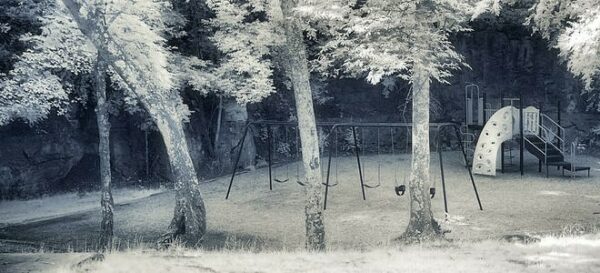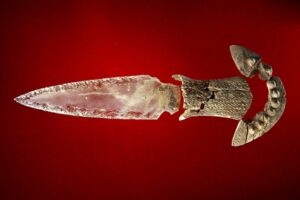In the expansive realm of historical manuscripts, where tales of ancient civilizations and forgotten knowledge are painstakingly preserved, few texts captivate the imagination quite like the Sibiu Manuscript. Discovered in the small Transylvanian town of Sibiu, this 16th-century book is unlike any other, for within its yellowed pages lies a remarkable revelation: an astonishingly accurate description of multi-stage rockets. At a time when the world was still blissfully unaware of the marvels of spaceflight, the Sibiu Manuscript hints at a hidden chapter in our history, where technology and ingenuity may have reached unprecedented heights.
The Sibiu Manuscript that defies time
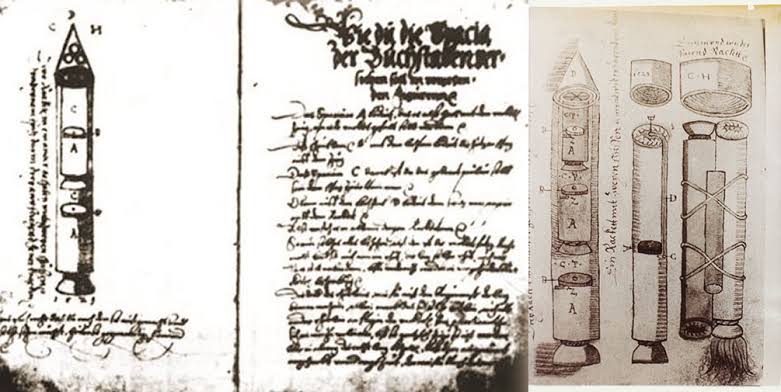
The Sibiu Manuscript is known to have spoken of liquid fuel and multi-stage rockets along with their complex constructions. A lot of people are skeptical when it comes to knowing things like these that contradict everything they ever knew about their present. But much to their skepticism, the 450-page manuscript found in Romania about six decades ago by Doru Todericiu, a professor of Science and Technology at the University of Buchares, does indeed exist. The manuscript was recovered from the archives of the city of Sibiu (Sibiu public records Varia II 374), in 1961.
Doru Todericu significantly discovered writings and drawings that depicted early artillery, ballistics and multistage rockets. Although the Sibiu Manuscript was discovered in the early 1960s, many have speculated that the words and language used in the manuscripts may date back even further, around the 16th century. No one knows who is truly responsible for the manuscripts themselves, but a German man named Conrad Haas has been credited for this amazing stride in history, and also as the first person to conceptualize multistage rockets.
Conrad Haas – a pioneering engineer of Mediaeval period
Conrad Haas (1509–1576) was an Austrian or Transylvanian Saxon military engineer from the Kingdom of Hungary, Transylvania. He is believed to be a pioneer of rocket propulsion. His designs include a three-stage rocket and a manned rocket. His sketches and ideas are truly amazing yet strange considering the timeline.
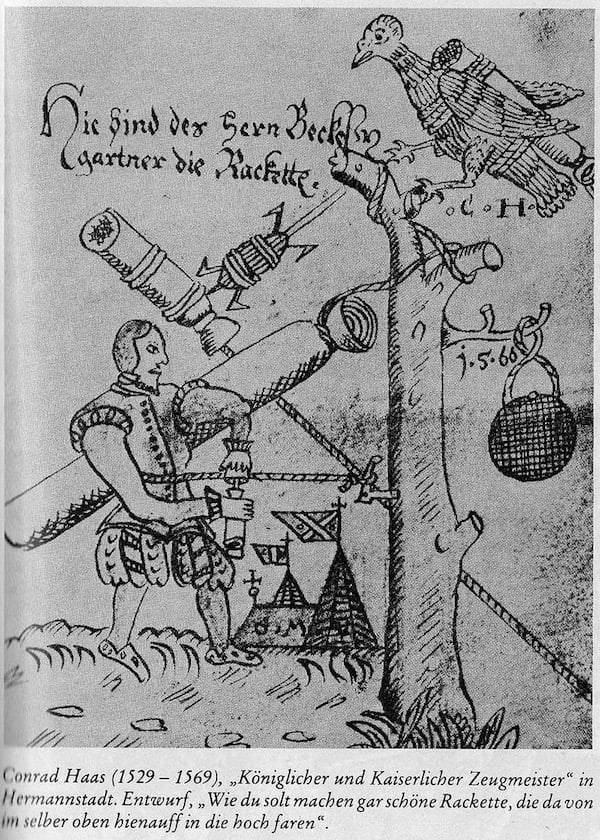
Haas was perhaps born in Dornbach which is now part of Hernals, Vienna. He held the post of the Zeugwart (arsenal master) of the Imperial Habsburg army under Ferdinand. In 1551, Stephen Báthory, the grand prince of Transylvania invited Haas to Hermannstadt, Eastern Hungarian Kingdom, now renamed as Sibiu, where he acted as weapons engineer and also he started to teach at Klausenburg, now known as Cluj-Napoca.
He wrote a German-language treatise on rocket technology, involving the combination of fireworks and weapons technologies, which widely known as the Sibiu Manuscripts.
Haas’ work also dealt with the theory of motion of multi-stage rockets, different fuel mixtures using liquid fuel, and introduced delta-shape fins and bell-shaped nozzles.
In the last paragraph of his chapter on the military use of rockets, he wrote (translated):
“But my advice is for more peace and no war, leaving the rifles calmly in storage, so the bullet is not fired, the gunpowder is not burned or wet, so the prince keeps his money, the arsenal master his life; that is the advice Conrad Haas gives.”
The Sibiu Manuscript and the experiment of Johann Schmidlap
Johann Schmidlap of Schorndorf was a 16th-century Bavarian fireworks maker and rocket pioneer. He published a book on fireworks, “Künstliche und rechtschaffene Fewrwerck zum Schimpff,” firstly printed in Nuremberg in 1561.
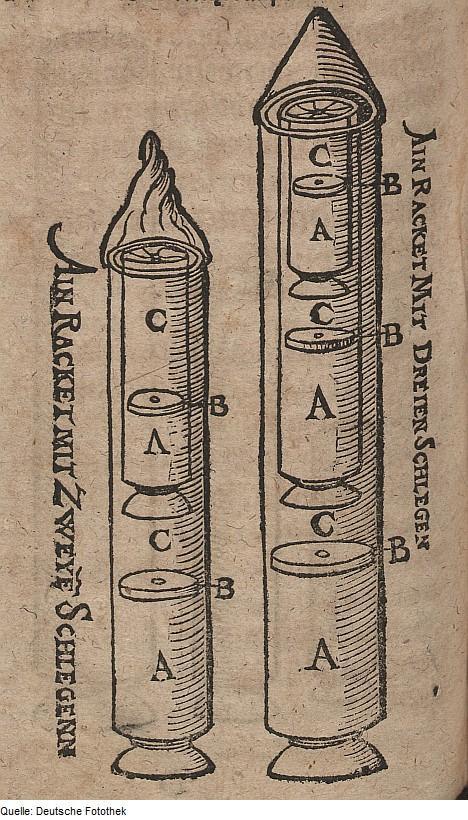
Schmidlap is believed to be the first to successfully fly staged rockets. It is said that he built his rocket based on the concept discussed in the work of Conrad Haas. He experimented with staging in 1590, using a design he called “step rockets.”
Before discovery of Haas’ manuscript, the first description of the three-stage rocket was in Poland credited to the Polish artillery specialist Kazimierz Siemienowicz in his 1650 work, “Artis Magnae Artilleriae Pars Prima.”

